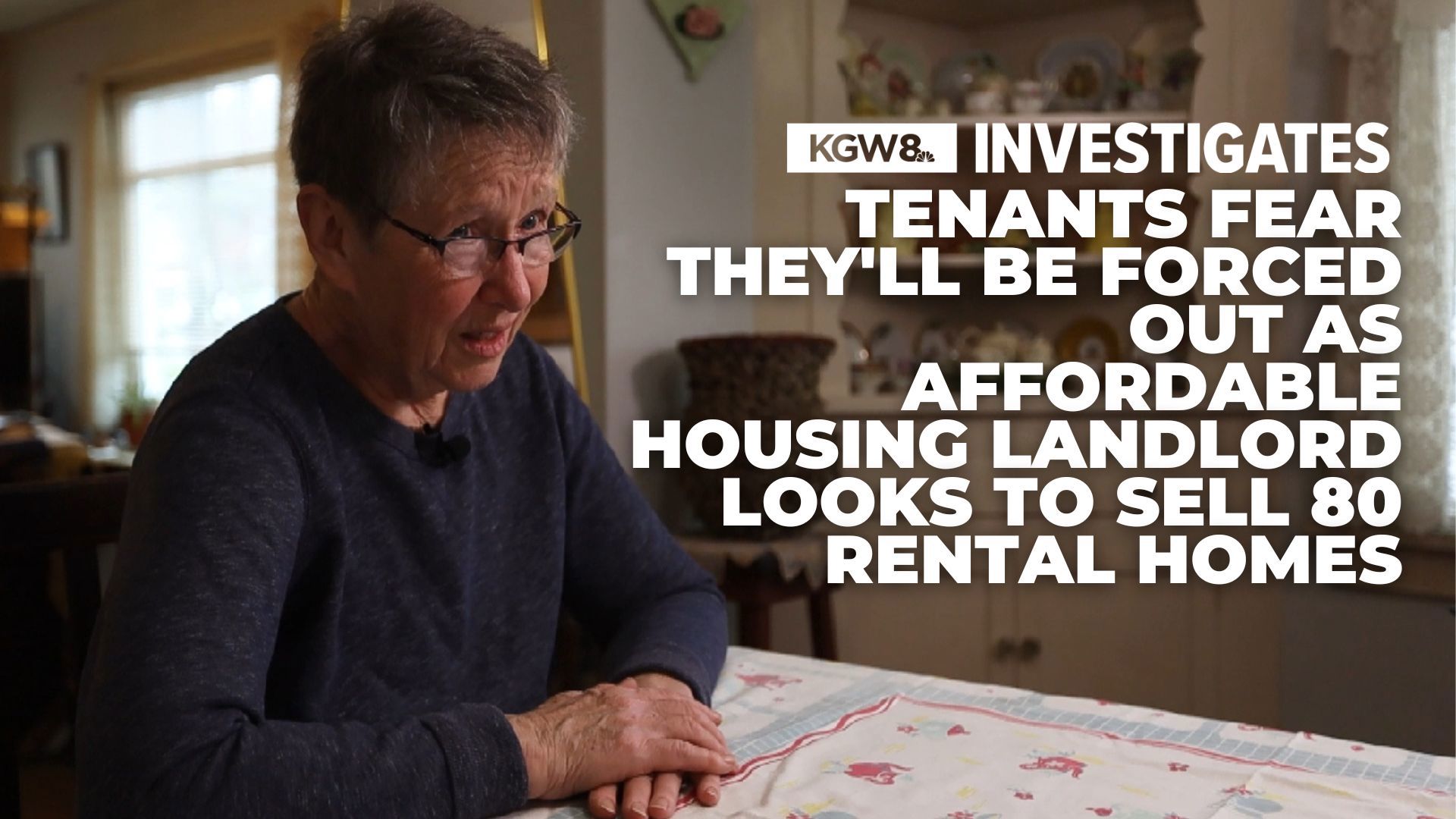Affordable housing landlord to sell 80 Portland homes; tenants fear they’ll be forced out – KGW.com

REACH Community Development to Sell Scattered Site Homes in Southeast Portland
REACH Community Development, one of Oregon’s largest affordable housing landlords, is planning to sell its entire portfolio of scattered site homes in Southeast Portland. This decision has left some long-time tenants concerned about the possibility of being forced out of their homes.
Impact on Tenants
Sheryl Oldham, a senior and disabled tenant who has lived in her Southeast Portland rental home for 53 years, expressed her fear of being displaced. She stated, “I just want to stay here. Where am I going to go?”
About REACH Community Development
REACH Community Development is a nonprofit organization that provides affordable housing for over 3,500 people in the Portland area. They develop and manage affordable apartments and homes, including scattered site homes like the one Oldham resides in.
Personal Story
Oldham, now 78 years old, has rented her home since 1972. The house is filled with family photos and memories, and she has a beautiful garden outside. She raised her children and grandchildren in this home, as evidenced by the pencil marks on the kitchen pantry that show their growth. Oldham described her home as a “wonderful place.”
Financial Challenges
In February, Oldham received a letter from REACH warning her that the house may be sold. A follow-up letter in March explained that rising costs, inflation, and high interest rates have worsened the financial situation for the nonprofit. REACH, like many organizations, needs to balance its budget while ensuring long-term sustainability.
Selling Scattered Site Homes
REACH is looking to sell its entire portfolio of scattered site homes, which includes approximately 80 properties in Southeast Portland. Margaret Salazar, CEO of REACH, stated that the organization has shifted its focus from small single-family homes to larger, multi-unit properties in the Portland-Vancouver metro area over the years.
Commitment to Residents
In the letter to residents, REACH emphasized its intention to sell to a nonprofit, mission-aligned purchaser who is committed to making the homes available to first-time buyers and existing REACH residents. Current residents will have the first opportunity to purchase their homes, and REACH is working on securing resources to assist residents in this process.
Sale Timeline and Support
The sale is expected to occur no earlier than June. The purchaser will sell the homes in phases over a two-year period, with the first phase going on the market in the fall. For residents who cannot afford to purchase their homes, REACH will provide relocation assistance, individual counseling, and priority placement in other REACH properties. Salazar reassured residents that REACH is committed to staying with them throughout the conversion process.
Concerns and Negotiations
Oldham’s lawyer and former neighbor expressed dissatisfaction with REACH’s lack of responsiveness, leaving residents in the dark. REACH acknowledged that negotiations are still ongoing, and they do not have all the details at this time. However, they are committed to providing more information and meeting with residents in person as the process moves forward.
Hope for the Future
Oldham remains hopeful that she will be able to purchase her house. The uncertainty surrounding her property has caused significant stress, but she firmly believes that this is where she belongs. She stated, “I want to remain here. I want to buy it and stay here.”
SDGs, Targets, and Indicators in the Article
1. Which SDGs are addressed or connected to the issues highlighted in the article?
- SDG 1: No Poverty
- SDG 11: Sustainable Cities and Communities
- SDG 17: Partnerships for the Goals
2. What specific targets under those SDGs can be identified based on the article’s content?
- SDG 1.4: By 2030, ensure that all men and women, in particular, the poor and the vulnerable, have equal rights to economic resources, as well as access to basic services, ownership, and control over land and other forms of property, inheritance, natural resources, appropriate new technology, and financial services, including microfinance.
- SDG 11.1: By 2030, ensure access for all to adequate, safe, and affordable housing and basic services and upgrade slums.
- SDG 17.17: Encourage and promote effective public, public-private, and civil society partnerships, building on the experience and resourcing strategies of partnerships.
3. Are there any indicators mentioned or implied in the article that can be used to measure progress towards the identified targets?
- Indicator 1.4.2: Proportion of total adult population with secure tenure rights to land, with legally recognized documentation and who perceive their rights to land as secure, by sex and type of tenure.
- Indicator 11.1.1: Proportion of urban population living in slums, informal settlements, or inadequate housing.
- No specific indicators mentioned in the article for SDG 17.17.
Table: SDGs, Targets, and Indicators
| SDGs | Targets | Indicators |
|---|---|---|
| SDG 1: No Poverty | Target 1.4: By 2030, ensure that all men and women, in particular, the poor and the vulnerable, have equal rights to economic resources, as well as access to basic services, ownership, and control over land and other forms of property, inheritance, natural resources, appropriate new technology, and financial services, including microfinance. | Indicator 1.4.2: Proportion of total adult population with secure tenure rights to land, with legally recognized documentation and who perceive their rights to land as secure, by sex and type of tenure. |
| SDG 11: Sustainable Cities and Communities | Target 11.1: By 2030, ensure access for all to adequate, safe, and affordable housing and basic services and upgrade slums. | Indicator 11.1.1: Proportion of urban population living in slums, informal settlements, or inadequate housing. |
| SDG 17: Partnerships for the Goals | Target 17.17: Encourage and promote effective public, public-private, and civil society partnerships, building on the experience and resourcing strategies of partnerships. | No specific indicators mentioned in the article. |
Source: kgw.com








